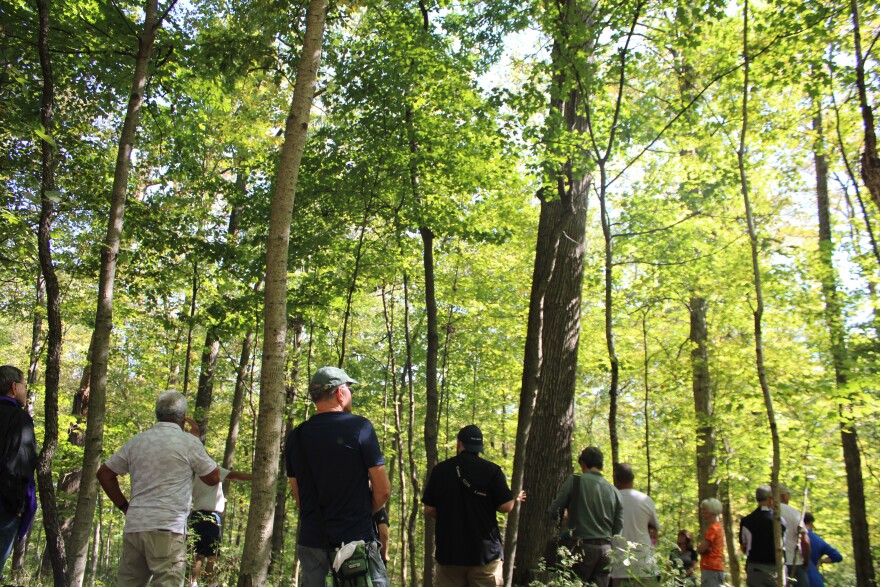For hundreds of years, a Beavercreek old-growth forest has defied suburbanization. One tree has even lived for 447 years.
The Ferguson Land Lab is a 44-acre forest in Beavercreek full of mature oak, walnut, hickory and maple trees. To solidify protections of the centuries-old forest, it was added into the national Old-Growth Forest Network.
The Ferguson Land Lab is the only old-growth forest in Greene County added to this network. There are 37 other Ohio forests that are a part of the network.
“[A] black walnut tree back there is one of the largest I've ever seen across the country, which is pretty unique."
The nonprofit network considers the age of a forest’s trees, existing legal protections, and public accessibility when selecting sites.
The forest stood out for its broad variety of tree species, the age of its trees and more, said Brian Kane, Mid-Atlantic Regional Manager for the Old Growth Forest Network.
“[A] black walnut tree back there is one of the largest I've ever seen across the country, which is pretty unique. And the terrain–there are so many fallen and old trees that are decomposing that are so essential for the health of a forest,” Kane said.
“All these various insects and beetles come in and gnaw away at these things for years and replenish the soil, making it rich again for new trees,”
Less than 1% of old-growth forests remain in the Eastern United States, according to the nonprofit. In order to be considered an old-growth forest, there are a few criteria it must fulfill.
“They contain trees that are at the end of their lifespan,” said Dave Nolin. “…around here, they have to be at least 200 to 300 years old. There aren't too many of those.”
Nolin is a local environmentalist, who formerly worked as the director of conservation for Five Rivers MetroParks. It was with his help that the forest was proposed and brought in front of the Old-Growth Forest Network.
He estimates the oldest tree in the forest — a white oak — is 447 years old.
Oaks make up a majority of the canopy in Ferguson Woods. But a concern of his, shared by other wildlife ecologists, is that oaks are having a harder time now starting new life cycles.
“Their seeds can't really take root and come up under the shade of the parents. They have to have the sun,” he said. “Oak trees are getting scarcer and scarcer. And the ones that are left are getting bigger and bigger.”
“It is a hidden gem in Greene County.”
The Beavercreek City School District stewards the forest, after it was gifted to the district by the Ferguson family in 1959.
Here were Edwin and Lida Ferguson’s wishes for the forest: “Such forest (shall) be used for the educational benefit of the youth of Beaver Creek Township in order that they may study nature in what [we] believe to be one of the best preserved wooded tracts now remaining in Ohio.”
The deed continues: “It is [our] desire that insofar as possible the said wooded tract shall remain in the same condition as it now is.”

Despite all the nearby suburban development, the forest came out relatively unscathed, Kane said.
“I think this particular forest just being as mature and as healthy as it is and not having been disturbed much is rare in this kind of a setting.” Kane said.
Tyler Alexander, director of business services for the school district, submitted the application to the network.
“The forest really depicts what Beavercreek and Beavercreek Township was like hundreds and hundreds of years ago and we have that right in the middle of Beavercreek,” Alexander said.
Being a part of the network allows them to access resources to better care for the forest, said Alexander. He said the district wants it to remain a part of the community for many years to come.
“I think that it should make our community members proud that over the course of time we have seen, especially in the Dayton area, tons and tons of development, and to have a 44 acre plot of land that has really been untouched is pretty amazing,” Alexander said. “It is a hidden gem in Greene County.”


